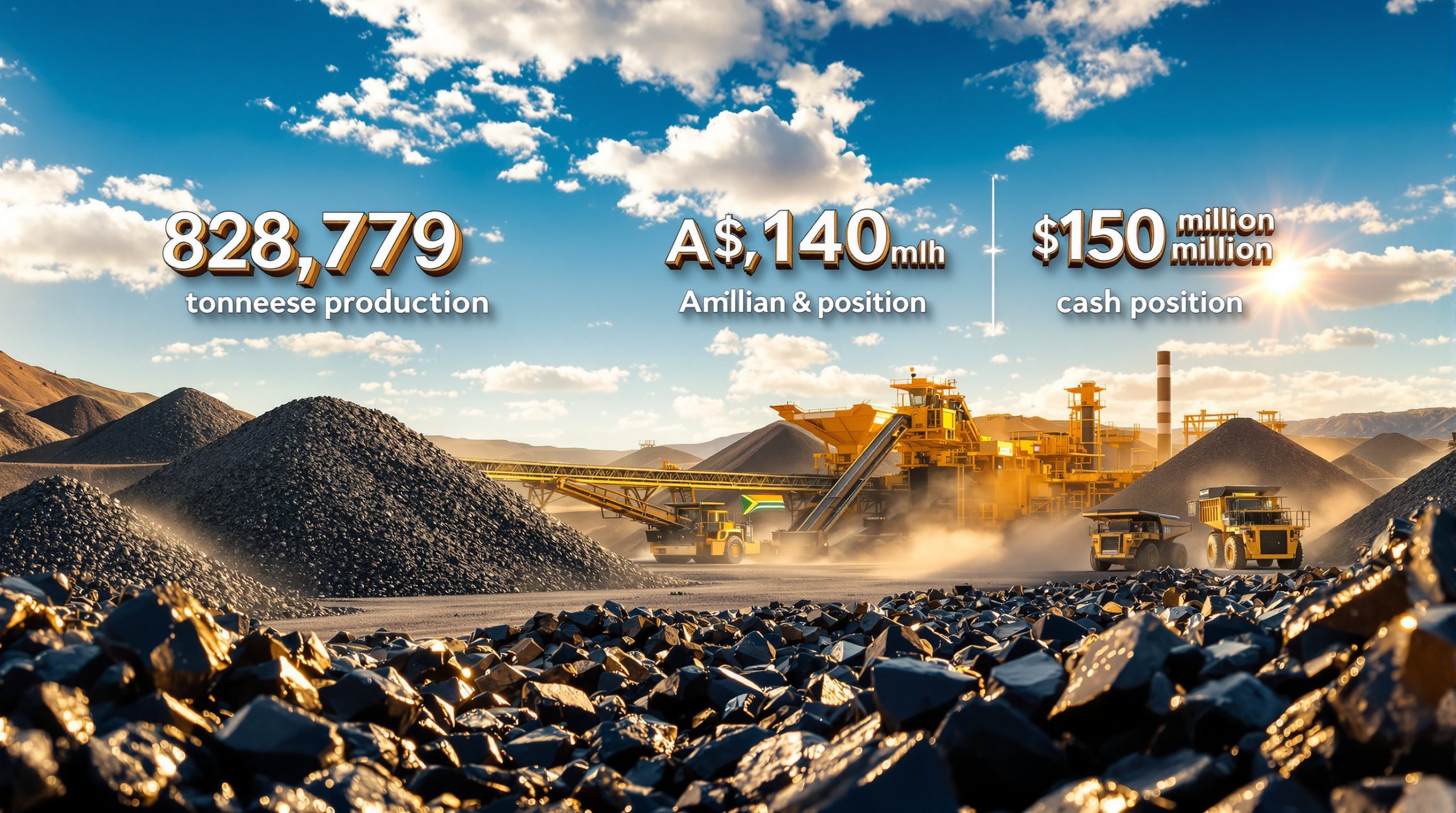Understanding the Current State of Rare Earth Supply Chain Separation
The landscape of rare earth supply chains is undergoing rapid change as global powers strive to reduce strategic dependencies. Geopolitical tensions have led to substantial efforts to build alternative sourcing and processing infrastructure outside traditional supply routes. This rare earth supply chain decoupling shift is notably evident in regions such as North America, Europe, Australia, and Africa, where new facilities and partnerships have emerged in response to heightened security and economic considerations.
Defining Supply Chain Decoupling in the Rare Earth Context
Rare earth supply chain decoupling refers to the intentional process of minimising reliance on dominant suppliers, particularly those with significant market share and geopolitical influence. This involves:
- Diversifying sources of rare earth ore and concentrate
- Investing in local or regional processing and refining facilities
- Developing redundancy through multi-regional supplier networks
- Fostering technology adoption for advanced separation and recycling
This transformation involves reengineering entire industrial supply networks, as opposed to merely adjusting individual trade relationships.
Current Decoupling Progress Metrics
Current data shows that decoupling is most advanced among light rare earth elements (LREEs), such as neodymium and praseodymium, with approximately a 15% increase in non-traditional processing capacity since 2023. Meanwhile, heavy rare earths (HREEs), typically more difficult to process and source, lag behind in supply chain realignment due to technical, financial, and regulatory barriers. Downstream refining—where the highest value-add occurs—remains heavily concentrated, limiting the pace of true decoupling.
What Drives the Push for Rare Earth Supply Chain Independence?
The ongoing movement toward rare earth supply chain decoupling is fueled by multifaceted drivers that go well beyond trade mechanics. Furthermore, policymakers are developing comprehensive frameworks to address these strategic vulnerabilities.
National Security Considerations
Key industries such as defence, aerospace, renewable energy, and critical electronics depend on rare earths for advanced components like permanent magnets, sensors, and batteries. In addition, recent developments in critical minerals strategy have highlighted the strategic importance of securing domestic supply chains. Any disruption in supply can threaten:
- Military readiness and technological edge
- Renewable energy infrastructure (e.g., wind turbines, EVs)
- Advanced manufacturing and telecommunications
Recent global events have exposed these vulnerabilities, sharpening the focus on domestic supply security as governments recognise that rare earths are foundational for economic and national stability.
Economic Vulnerability Assessment
A concentration of rare earth processing capabilities provides leverage to dominant suppliers, increasing risks of price shocks, supply manipulation, and trade weaponisation. Policy-based export restrictions have underscored the strategic importance of in-region supply chains. Consequently, large economies are prioritising rare earth supply chain decoupling to prevent being caught off guard by political and economic shocks.
How Are Countries Implementing Rare Earth Decoupling Strategies?
Nations are tackling rare earth supply security through concerted investments and multilayered collaborations. However, recent executive order on minerals demonstrates the evolving policy landscape affecting these strategies.
Domestic Mining and Processing Development
The development of local production capacity sits at the heart of decoupling. Examples include:
- North America: Multiple processing projects, such as the US-based Mountain Pass and rare earth refineries, are targeting operational status between 2026 and 2027.
- European Union: Strategic funding for critical mineral processing and policy support for regional supply networks.
- Australia: Companies like Arafura Rare Earths and Northern Minerals are advancing world-class projects with high neodymium-praseodymium (NdPr) ratios. Such projects have received substantial government and private backing, even as they navigate capital-raising challenges and price volatility.
- Africa: New partnerships with Western entities aim to develop rare earth deposits with a focus on ethical and transparent supply.
These efforts often involve overcoming significant capital requirements. For instance, Arafura raised funds at lower share prices, resulting in approximately 40% dilution, but positioned itself as one of the most advanced Western projects ready to meet rising NdPr demand.
Alternative Supplier Partnership Networks
An increasing number of countries and companies are implementing strategies to enhance supply chain visibility and building resilient networks:
- Signing long-term offtake agreements with emerging producers
- Creating joint ventures to build processing or recycling facilities near end-use markets
- Collaborating on technology transfer and regional standards
This strategic redundancy is critical for supply resilience.
Which Sectors Face the Greatest Decoupling Challenges?
Some industries are more exposed to risks during rare earth supply chain decoupling. Moreover, understanding these sector-specific challenges is crucial for developing targeted solutions.
Renewable Energy Technology Impacts
Wind turbines and electric vehicle drivetrains require permanent magnets made from rare earths like NdPr in specific grades, presenting acute sourcing and specification challenges. While recycling rare earths from decommissioned turbines and motors offers potential, scalable solutions require substantial R&D and infrastructure buildout. Furthermore, innovative approaches such as the recent battery recycling breakthrough show promise for addressing these challenges.
Electronics and Technology Manufacturing
Consumer electronics, computing hardware, and advanced telecom equipment require consistent, high-specification rare earth inputs. Modifications in supplier sources demand rigorous testing, iterative certification, and potential redesigns, often extending the timeline for meaningful diversification.
What Are the Economic Implications of Rare Earth Decoupling?
Rare earth supply chain decoupling brings both costs and substantial opportunity. In addition, analysis of tariff impact analysis reveals the broader economic implications of these strategic shifts.
Short-Term Cost Increases and Market Volatility
Early decoupling phases are almost always marked by heightened procurement and operational costs, a factor underscored by rising premiums from alternative sources, increased transport, and inefficiencies from fragmented supply chains. Market volatility also spikes as stakeholders adjust to changing inventory strategies and uncertainty.
Economic Impact Analysis:
| Sector | Cost Increase Range | Timeline to Stabilisation |
|---|---|---|
| Automotive | 8-15% | 18-24 months |
| Electronics | 12-20% | 24-36 months |
| Defence | 15-25% | 36-48 months |
| Renewable Energy | 10-18% | 24-30 months |
Long-Term Strategic Benefits
Once in-region or diversified supply chains mature, benefits include:
- Improved price stability
- Enhanced supply security and strategic autonomy
- New jobs, higher technology intensity, and regional economic diversification
The initial cost premium is often justified by long-term reductions in strategic risk.
How Do Export Controls and Trade Policies Affect Decoupling?
Trade regimes play a pivotal role in rare earth supply chain decoupling, shaping incentives and barriers. However, the development of a critical minerals reserve demonstrates how strategic stockpiling can complement these policies.
Export Licensing and Restriction Mechanisms
Export controls go beyond tariffs, now spanning:
- Licensing for specific rare earth products and related technologies
- End-user and end-use monitoring to ensure compliance with strategic objectives
- Extraterritorial regulations impacting multinationals operating across jurisdictions
These measures can accelerate or delay decoupling initiatives, depending on their scope and enforcement.
Strategic Stockpiling and Emergency Reserves
National rare earth reserves serve as shock absorbers during supply chain transitions. While useful, stockpiling incurs:
- Holding costs and maintenance expenses
- Material degradation risks
- Strategic trade-offs between immediate supply security and long-term efficiency
Some nations have ramped up their reserve programmes as a temporary buffer during decoupling transitions.
What Role Does Technology Innovation Play in Decoupling Success?
Technological leaps are essential to achieving sustainable rare earth independence. Furthermore, advances in supply chain management and efficiency contribute significantly to decoupling success.
Alternative Material Development
Research into substitutes—such as ferrite or alnico magnets and rare earth-free phosphors or catalysts—offers promise for lowering dependency. Success in these efforts could fundamentally alter how rare earths are used in key sectors.
Recycling and Circular Economy Solutions
Advanced recycling can recover significant rare earth volumes from end-of-life goods. This approach, supported by innovations in enhancing efficiency with supply chain strategy, offers multiple benefits:
- Mitigates demand for primary mining
- Reduces environmental footprint
- Accelerates supply chain resilience in critical regions
Recycling Potential by Source:
- Electronic waste: 15-25% of annual rare earth demand
- Automotive components: 8-12% of annual demand
- Industrial equipment: 5-8% of annual demand
- Military hardware: 3-5% of annual demand
Urban mining initiatives targeting these streams are expanding alongside technology partnerships across the West and Asia.
Which Companies and Regions Benefit from Decoupling Trends?
Decoupling is creating opportunities in previously underdeveloped markets while established players race to adapt. Consequently, investment patterns are shifting toward strategic regions and companies.
Emerging Rare Earth Producers
Australian, Canadian, and African companies now attract growing investment and strategic offtake agreements. Notable names include Arafura Rare Earths, which holds a high NdPr ratio and is among the most advanced projects outside Asia. These companies are increasingly valued for their strategic positioning and advanced project timelines.
Processing and Refining Capacity Development
New and expanding downstream rare earth separation capacity is critically important. Companies delivering local advancements in separation and refining attract premium valuations and frequently secure government or multi-lateral support. Delays in capital raising and regulatory approvals are common bottlenecks, as demonstrated by recent sector fundraising cycles.
What Are the Timeline Expectations for Meaningful Decoupling?
Decoupling is a multistage process that unfolds over many years and requires substantial coordination. Moreover, the timeline varies significantly across different sectors and regions.
Phase 1: Emergency Preparedness (2024-2026)
- Strategic stockpiling and identification of supply vulnerabilities
- Short-term supply agreements and closing of priority gaps
- Limited new processing capacity comes online
Phase 2: Capacity Building (2026-2030)
- Substantial investment in mining, processing, and recycling infrastructure
- Major projects in North America and Australia enter production
- Supply redundancy in strategic sectors improves
Phase 3: Strategic Independence (2030-2035)
- Mature, resilient supply networks deliver secure, reasonably priced, and reliable rare earth supplies to critical industries
- Domestic and allied producer market shares approach parity with traditional suppliers across select elements and applications
How Should Investors Approach Rare Earth Decoupling Opportunities?
Rare earth supply chain decoupling offers returns and risks in equal measure. Furthermore, successful investment requires careful analysis of both direct and indirect opportunities.
Direct Rare Earth Investment Considerations
Direct investments in rare earth mining, separation, and refining companies demand close attention to:
- Project technical feasibility and metallurgical expertise
- Regulatory approval timelines and jurisdictional stability
- Capital intensity, dilution risk, and financing status
- Management capability and experience in project execution
- Competitive advantages (e.g., high NdPr ratios, shorter timelines to production)
Many projects witness share price volatility near capital raises; high dilutions are not uncommon as seen with recent major fundraising rounds. Investors should plan for extended development cycles and be wary of momentum-driven price spikes detached from fundamental risk factors.
Investment Risk Assessment Framework:
- Technical feasibility and processing capabilities
- Regulatory approval status and timeline
- Capital requirements versus available funding
- Management experience and track record
- Market positioning and competitive advantages
Indirect Exposure Through Supply Chain Beneficiaries
Investors can also target:
- Technology firms leading rare-earth substitutes
- Circular economy and recycling specialists
- Downstream manufacturers secured by diversified long-term supply contracts
These exposures provide insulation from commodity price swings and regulatory unpredictability.
What Challenges Could Derail Decoupling Efforts?
Despite momentum, rare earth supply chain decoupling is at risk from multiple headwinds. However, understanding these challenges is essential for developing mitigation strategies.
Technical and Economic Barriers
Rare earth mining and processing are capital-intensive and environmentally sensitive, involving complex geochemistry and regulatory scrutiny. High mineral grades and robust project economics are necessities for long-term success. Failure to achieve necessary funding, technical milestones, or environmental certifications can result in delays, increased costs, or project cancellations.
Political and Policy Risks
Changing political winds, international negotiations, and domestic policy shifts can impact decoupling strategies. Export controls, new bilateral agreements, or shifting priorities (for example, changes in US or EU leadership) may delay or reroute planned investment and policy commitments.
Future Outlook: Will Rare Earth Decoupling Succeed?
Future supply chain security will hinge on staying power, innovation, and economic realism. In addition, the success of decoupling efforts will depend on coordinated international cooperation.
Success Scenarios and Requirements
Long-term decoupling success depends on:
- Consistent capital allocation and multiyear policy support
- Technological innovation in processing, substitution, and recycling
- Deep international collaborations among allied countries
- Strategic patience to weather the cost and volatility of transition phases
Potential Compromise Solutions
It is possible that complete separation proves impractical or uneconomic across all rare earths and applications. Partial or selective decoupling—securing strategic independence for military and infrastructure sectors while allowing some commercial integration—may ultimately represent the most balanced approach.
The coming decade will determine whether rare earth supply chain decoupling evolves from strategic aspiration to economic and industrial reality.
Further Exploration:
Readers seeking deeper insight into rare earth supply chain decoupling and global commodity trends can explore additional market resources, financial news, and industry analysis outlets to track real-time regulatory changes and emerging investment themes.
Want to Capitalise on Rare Earth Supply Chain Disruption?
Discovery Alert's proprietary Discovery IQ model delivers real-time alerts on significant ASX mineral discoveries, including critical rare earth opportunities that could benefit from global supply chain decoupling trends. Explore how major mineral discoveries have historically generated substantial returns during periods of strategic resource realignment, and begin your 30-day free trial today to position yourself ahead of the evolving rare earth investment landscape.




